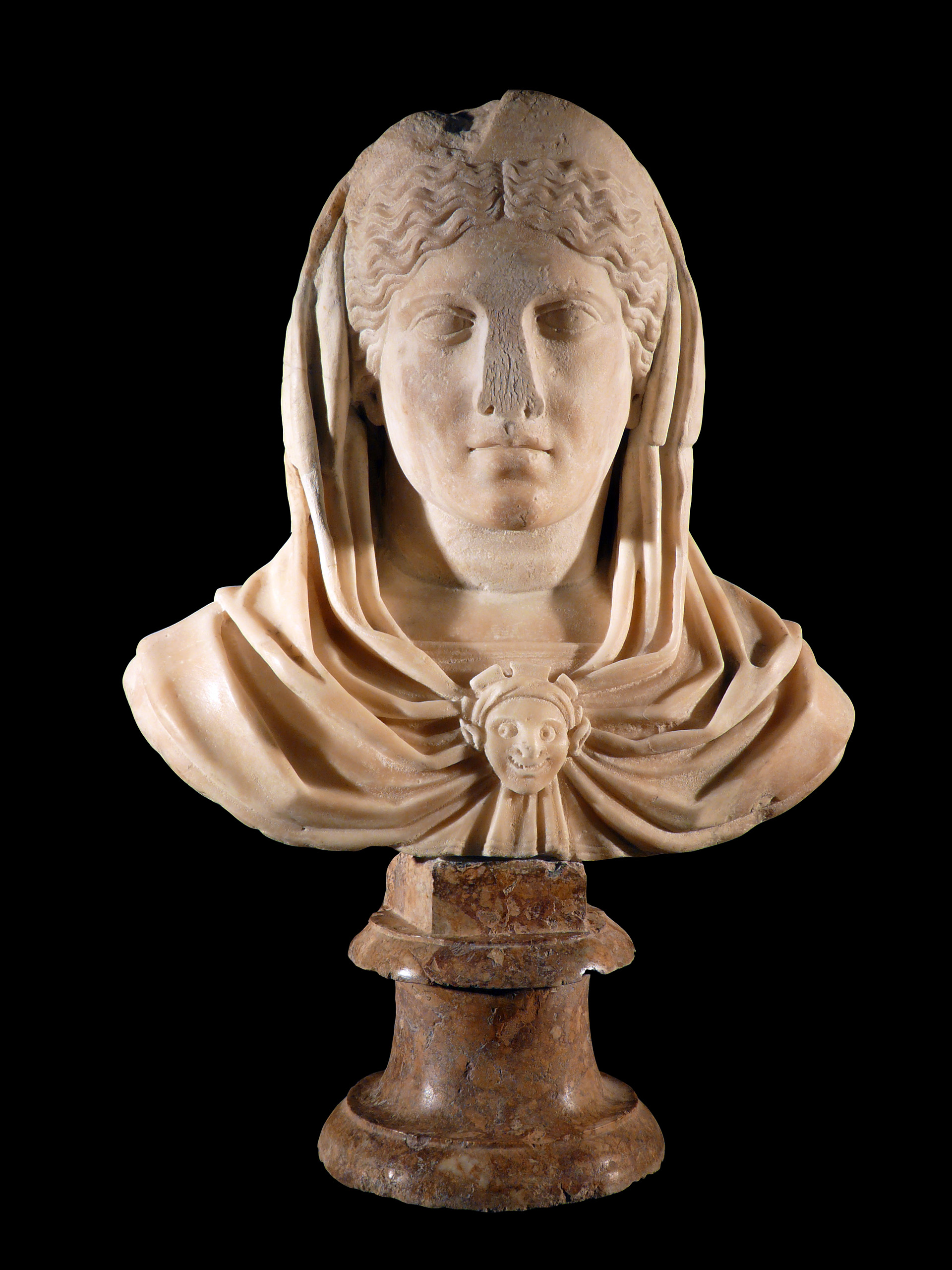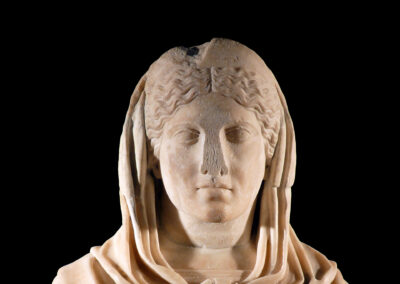Because of the diadem, an attribute of the official portraits of Livia Drusilla, deified as a virtuous model of a matron, this piece has been identified with one of these idealised portraits of the third wife of the Emperor Augustus and mother of his successor, Tiberius. However, this official representation dates from the time of Caligula, while specialists agree that the style of this sculpture must date from before the reign of that emperor. It is therefore more likely to be a portrait of a goddess, perhaps Juno, or the personification of a virtue.



